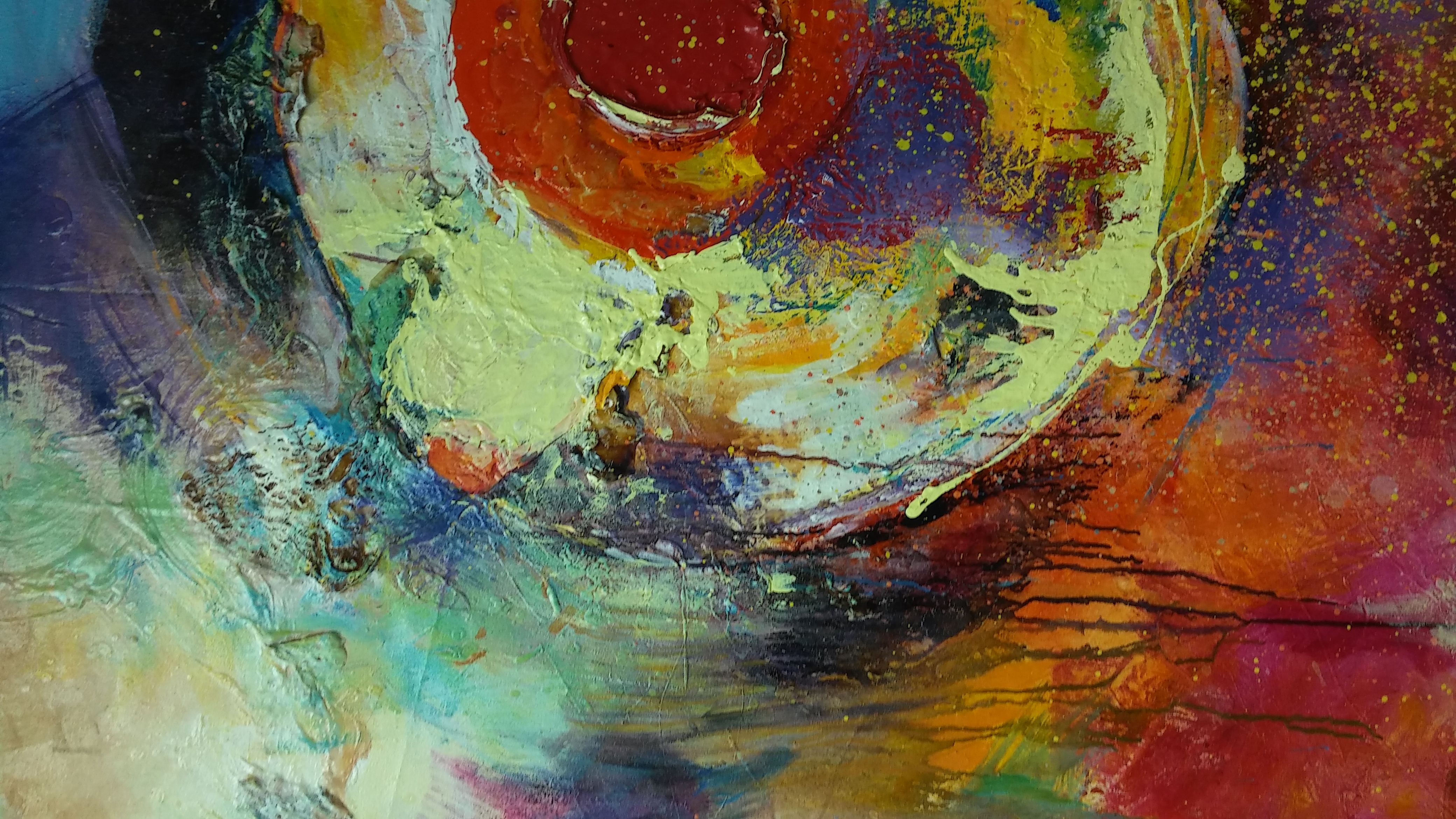By Jerome Langston
“Something has to really grab me―catch the eye,” says award-winning Norfolk artist, Maizelle Brown, during a recent conversation at her spacious apartment, a spot that seems ideally suited for the display of paintings and sculptures. Known professionally as just Maizelle, the acclaimed visual artist, one of the most prominent in the Commonwealth, is telling me about her process in selecting artists for these group shows that she regularly curates. Of course with a professional career spanning five decades, she’s met and befriended a lot of fellow artists.
I first met Maizelle at her Ghent neighborhood gallery, Maizelle Gallery of Art, during the early part of the last decade, a time before I was even a working writer. Her gallery was one of the few locally that exhibited and sold the work of black artists regularly. That gallery has been closed for well over a decade, but Maizelle’s commitment to supporting the work of fellow black artists has continued without interruption.
Later this month, the Norfolk Arts’ Offsite Gallery at the World Trade Center, houses Maizelle’s latest curated exhibition, 2017 Renaissance: Art of African American Artists. Featuring approximately 40 works by an impressive grouping of black artists: including S. Ross Browne, Chinedu Okala, Clayton Singleton, P’ter Brown, and of course, Maizelle herself. The pieces represent a broad range of expression: including painting, sculpture and mixed media.
“As a curator organizing a show, I almost never have a theme,” Maizelle says. However, the show title is meant to denote that black art is still in vogue, just as it was during the famed Harlem Renaissance, and that its creators remain important to American cultural expression, whether their current day impact is publicized or not. One of the works that the show’s curator is exhibiting is “Steppin’,” an Acrylic painting that features 3 black male tap dancers, positioned in a row. It’s a gorgeous work that recalls some of the colorful art of the jazz age.
The exhibit will also feature Alexis Joyner’s striking “African American Gothic.” Alexis is a noted sculptor based in Elizabeth City, and a recently a retired art educator. “It’s a mixed media piece, black walnut and steel,” Alexis tells me by phone earlier this week. “I’m an old country boy, born and raised on a farm in Southampton County, Virginia. So this scene would be quite familiar from my memory, and I was also, sort of, poking fun at the ‘American Gothic’ that Grant Wood did.”
The North Carolinian’s work has been exhibited widely, and is in various private collections. He counts the famous black sculptor, Elizabeth Catlett, who died in 2012, as an early influence. “She can really make her statement, simply and exquisitely, and that speaks to me,” he says. Alexis has known Maizelle since the early eighties, and they’ve long admired each other’s work.
“We have always sort of pushed one another, and she’s always been encouraging and supportive.”
Another artist who will have several pieces in the show, and has also known Maizelle for some years, is nationally recognized woodcut artist Dennis Winston. Dennis is a Virginia based artist, who was educated at both Norfolk State and the University of Richmond.
“I’m a wood cut artist, so I’m working in something that’s really old,” Dennis says, during a recent phone call. “You know, I’ve gone through everything from photography, to ceramicist, to sculpture, and painting. I’ve been sort of doing these wood cuts for the last 30 years.” Amongst his works being shown in the group show, is a woodcut portrait of jazz icon and composer, Duke Ellington, titled, simply, “Duke.”
“As an artist, I try to look at universal themes, obviously as an African American artist, I’m looking at themes that relate to the African American experience, but they’re also experiences that are concerned with the everyday realities of everyone,” he later explains.
The art of black artists is as disparate as it is yet connected. Arguably the most famous living black artist working today is Kehinde Wiley, whose expansive retrospective, Kehinde Wiley: A New Republic, was a huge hit last year at Richmond’s Virginia Museum of Fine Arts. It was a stunning exhibit, and it reminded me of how different his work is, from say — Jean-Michel Basquiat, whose works now sells for huge amounts at auctions, and is considered by some to be the most famous African-American artist of the late 20th century. Both of their works were part of the Chrysler Museum’s hugely successful 30 Americans exhibition, from 2012.
The 2017 Renaissance exhibit will demonstrate, much like 30 Americans did, that artwork created by black artists has a long, and interesting historical lineage, and yet is still a key part of contemporary expression. Or as Maizelle notes, while I’m eating tasty pasta that her daughter, Noelle, has politely provided me. “I really wanted the emphasis to be that the movement is just as strong as ever.”





